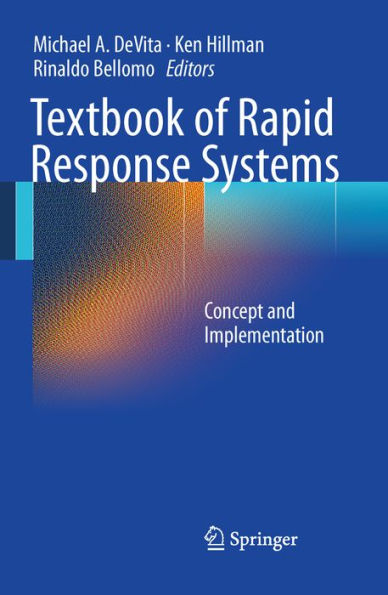Reviewer: David James Dries, MSE, MD (Regions Hospital)
Description: This is the second edition of a multiauthored book describing the theory and organization of teams designed to identify patients developing critical illness outside the intensive care unit.
Purpose: Clinical and administrative strategies supporting Rapid Response Systems are reviewed along with the means for implementation in various hospital settings.
Audience: Clinical leadership in hospitals considering or featuring a Rapid Response System are an appropriate audience for this work, along with their administrative partners.
Features: Chapters are organized to present the components of a Rapid Response System beginning when patient decompensation is identified and treatment is initiated. Approaches to patient care using Rapid Response Systems are discussed for hospitals featuring a variety of staffing models. Presentations are grouped in three major areas. First is the evolution of the culture of safety that led to the recognition that Rapid Response Systems should be developed. The largest group of chapters describes creation of Rapid Response Systems for specific adult and pediatric problems. A third and smaller group of chapters describe implementation of Rapid Response Systems with various hospital staffing models and in patients with "Do Not Resuscitate" orders. There are no radiographs or photographs, but tables and simple line drawings are occasionally used to good effect. Reference lists with each chapter emphasize primary literature with citations dating to within two years of publication. A brief table of contents lists chapters by type and attributes authorship while the subject index of approximately 10 pages provides adequate access to content.
Assessment: This update reflects studies in literature produced since the first edition was published in 2011. This field is challenged by terminology and implementation in healthcare systems having varied treatment structures. These authors present management strategies in these various settings.
5
1

Textbook of Rapid Response Systems: Concept and Implementation
438
Textbook of Rapid Response Systems: Concept and Implementation
438
66.99
In Stock

Editorial Reviews
Product Details
| ISBN-13: | 9780387928531 |
|---|---|
| Publisher: | Springer New York |
| Publication date: | 12/10/2010 |
| Edition description: | 2011 |
| Pages: | 438 |
From the B&N Reads Blog
